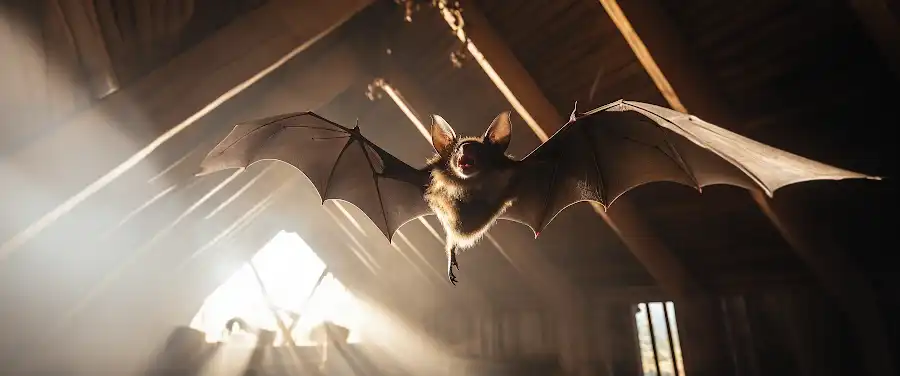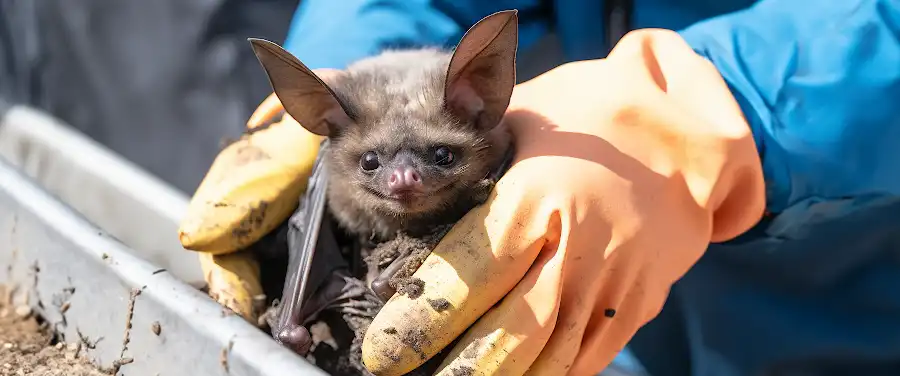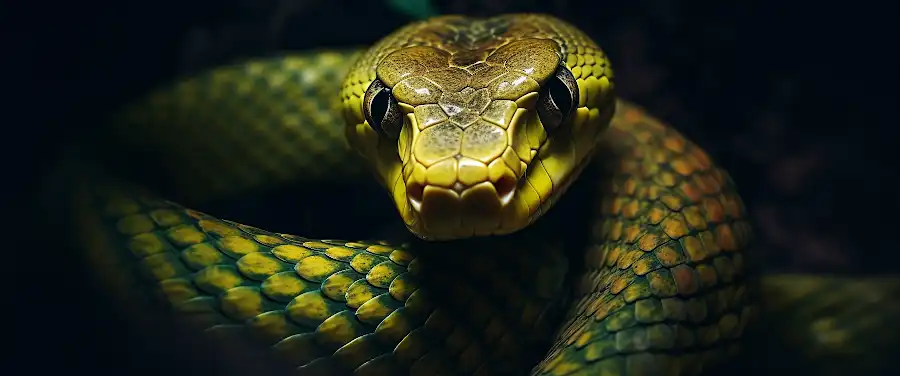
Imagine going about your daily routine at home when, out of nowhere, you discover an unwanted guest slithering across your floor — a snake! This could be a frightening, not to mention dangerous situation, as many snakes are venomous and pose a risk to humans and pets. Every year, more and more people find themselves experiencing this unwelcome visit, leading to a sharp increase in snake invasions.
Now, you’re probably wondering why a snake would venture into your property. Surprisingly, we often unwittingly create a prime habitat, attracting these scaly creatures. Snake attractants around homes can range from overgrown landscaping to piles of wood, rocks, and debris. Each cluttered corner or overgrown bush at your home is like a shiny billboard to snakes, beckoning them with the promise of abundant food sources and convenient hideouts.
But worry not! The solution to your snake problem lies not in dangerous chemicals or costly snake traps, but in simple, natural snake deterrents. Using elements available in your home or just a quick buy away, you can effectively keep these slick intruders at bay. Here’s the eye-opening revelation – preventing snake invasions doesn’t require an arm and a leg; it calls for knowledge and creativity. Coming up next, we shall delve into the potential dangers of having snakes in your home. Don’t miss out on this!
What Attracts Snakes to Homes?
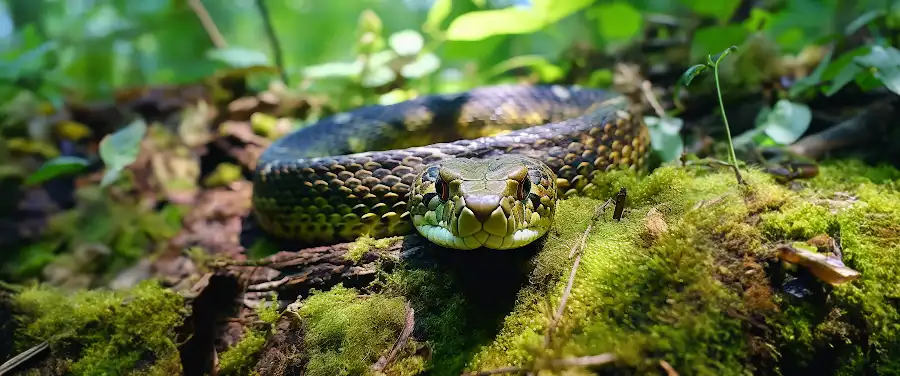
Snakes are often misunderstood creatures that, despite their fearsome reputation, primarily seek out certain environments for shelter and food. Just like us, they prefer places that are conducive to their survival. If you’re dealing with the unruly issue of snakes in your home, it’s essential to understand what makes your house attractive to these reptiles.
A combination of factors can transform an ordinary home into a perfect haven for snakes. Chief among these is a yard filled with places that offer refuge, such as overgrown plants and piles of firewood. Furthermore, homes that are located in proximity to fields, woods, or water sources can have snake issues, as these environments typically host a variety of rodents – a prime food source for snakes.
| Snake Attractant | Potential Solution |
|---|---|
| Overgrown plants | Regular trimming |
| Piles of firewood | Proper storage away from home |
| Proximity to fields, woods, or water | Installation of fences |
| Presence of rodents | Regular pest control |
In particular, different species of snakes have unique preferences. For example:
- Garter Snakes – They prefer being near water bodies or moist places.
- Rattlesnakes – These reptiles are attracted to rocky and open areas, rustic wood piles, or junk.
Understanding these snake habitats can be exceptionally beneficial in managing the invasion. If you identify with any of these environmental conditions, you may seek solace in the fact that a few adjustments to your home and surrounding area can make it less inviting to snakes.
According to a study conducted by the University of California, around 70% of snakes that invade homes do so because of an existing rodent problem. This finding points out the interconnected nature of ecological problems and their solutions. By addressing your rodent issue, you may also control your snake problem.
To conclude, many factors can make your home a magnet for snakes, whether it’s the unique conditions of your property or the types of snakes that naturally inhabit your area. Identifying these aspects is the first step in making your home unreachable and unattractive to snakes.
Having gained a better grasp, we can now transition to the next crucial point of inquiry: “How can one identify a snake infestation?”
How Can One Identify a Snake Infestation?
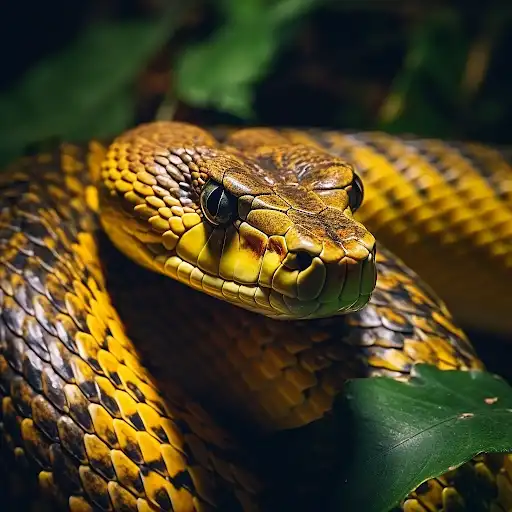
You step outside on a warm summer evening, and a chill runs down your spine – the unmistakable slithering sound sends an alarm in your head. The possibility of having a snake in your property is not something one takes lightly. So, how can you ascertain if you have an unwelcome slithering guest?
The first way to identify a snake infestation is by recognizing the signs. Snakes leave behind distinctive signs that should tell you of their presence. For instance, they often leave trails in dusty and less-trafficked areas of your home. In gardens, you can also locate their hiding spots by searching for holes in the ground. Also, look out for snake skin, a sure sign of their presence.
Different snake species have different signs of their presence. For instance, the North American Rattlesnake is known to ask before it strikes by rattling its tail. Furthermore, a snake in the house could be an Eastern Coral Snake or an Indigo Snake, both found in Florida. The presence of these species would warrant different responses, so it’s crucial to identify which ones you’re dealing with.
The snake invasion seasons are another determinant. Snakes are cold-blooded, so during cooler seasons, they’ll seek heat, often finding refuge in homes. During summer, on the other hand, they may try to escape the scorching heat by lurking around wet, cooler places, which might bring them towards your beautiful garden or shady home interiors. Data from National Pest Management Association shows that snake sightings peak during the summer and fall months, proving that these periods are the snake invasion seasons most homeowners need to beware of.
So, identifying a snake presence in your home necessitates knowledge about snake signs, the common snake species, and being mindful of the snake invasion seasons. Is it enough to know all these? The next heading “How does snake behavior change with seasons?” will reveal more about snake habits and how to exploit this knowledge to make your home unattractive to snakes.
How Does Snake Behavior Change With Seasons?
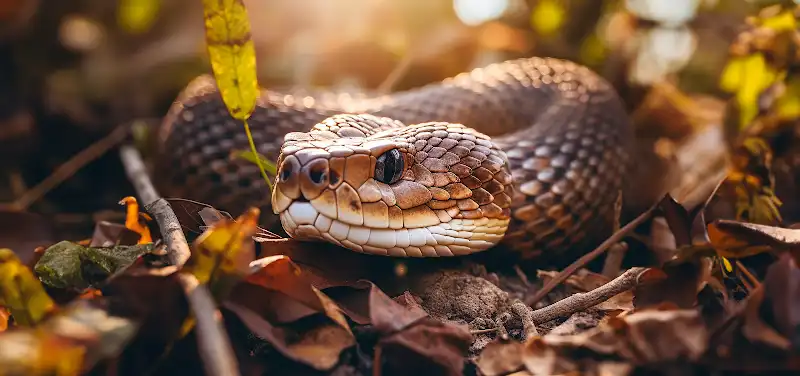
Just like any other living creatures, snakes too, are influenced greatly by the changing seasons. They gauge the climatic conditions and adjust their activities accordingly. Understanding these seasonal changes in snake behavior is imperative for anyone willing to learn how to make your home unattractive to snakes.
With the ushering in of each season, the activity pattern of snakes alters. During the cold winter months, snakes typically go into hibernation or what we call brumation in the world of reptiles. They seek shelter in burrows, crevices, or other warm spots and remain largely inactive.
Come spring, snakes awaken and become quite active again. This is the time when they mainly hunt for food and mates. During the hot summer months, you would find most snakes again trying to keep cool, thus limiting their activity to dawn and dusk when the temperatures are mild.
Fall is another active season for snakes as they are preparing for the upcoming winter. They feed heavily to store energy, and some begin scouting for suitable hibernation spots.
Preventative measures to consider during different seasons include:
- Winter: Ensure all potential hiding or warm spots are sealed or eliminated.
- Spring: Keep your property clean to avoid attracting snake prey, such as rodents and insects.
- Summer: Incorporate snake repellent plants and remove objects that provide shade or a potential hiding spot.
- Fall: Regular yard maintenance and removal of debris.
It’s worth noting an informative report from the National Wildlife Federation, which suggests that overall climate change could potentially impact snake behavior, particularly breeding patterns and geographical range. Understanding these behaviors not only help you safeguard your home from these slithering visitors, but it also contributes to their conservation by minimally interfering with their natural way of life.
By acknowledging the patterns of seasonal snake activity, we can undoubtedly enforce preventative measures effectively. This understanding lets us strike a crucial balance between our comfort, safety, and respect for these remarkable creatures’ role in the ecosystem. It makes our quest for figuring out how to make your home unattractive to snakes both effortless and efficient.
Stay ahead of the curve. As we move onto the subsequent topic “How can you make the home environment uninviting to snakes?“, let’s delve deep into understanding various natural methods that make your home a no-go zone for snakes.
How Can You Make the Home Environment Uninviting to Snakes?

Don’t fret if you have a phobia of snakes, you’re not alone. Nothing can be more frightful than finding a snake lurking around your dwelling. The good news is, there are several ways to make your home unattractive to snakes using simple and natural methods. By maintaining your garden, reducing snake hiding spots, and making pertinent home modifications, you can create an environment that’s uninviting. Let’s explore how you can effectively deter these slithering visitors.
Home Modifications & Garden Maintenance
First things first, your abode. Snakes are attracted to clutter -A messy, unkempt environment provides a perfect hiding spot. If you declutter inside and outside of your home, you are taking the first step in making your home unattractive to snakes.
Pay attention to high grass, leaf piles, and wood stacks in your yard. Regularly cut the grass, remove the fallen leaves, and relocate wood stacks away from your home. By doing so, you will reduce potential hiding spots and deter snakes from seeking refuge.
Snakes love inhabiting holes and cracks. Inspect your home for any small gaps or cracks that a snake might find inviting. This includes the basement, around doors, windows, and foundations. If you find these crevices, seal them up immediately. Not only will this deter snakes, but it will also help keep out other pests.
Water is a significant attractant for snakes. If you have leaky faucets or water accumulation in your yard, repair them, or drain the water. Check your sprinkler system for leaks and ensure your yard drains well after watering or rain.
Deterrent Plants
Interestingly, some plants naturally repel snakes. For example, the Marigold, Mother-in-law’s tongue (Snake Plant), and the West Indian Lemongrass are publicized as natural snake repellants. Planting these around your home can make the environment less inviting for snakes. But remember- these plants alone won’t guarantee a snake-free home, but when combined with the aforementioned home modifications and maintenance practices, they can undoubtedly help.
Reducing Snake Hiding Spots
After modifying your home and maintaining your garden, the next step is to minimize hiding spots within your house. General tidiness is maintained by cleaning up clutter in your basement or garage, sorting your materials neatly, and keeping your garden tools correctly after use will discourage snakes.
It’s estimated that every year, over 1.2 million snakebite incidents occur globally, making it essential to get rid of potential hiding spots. Keep your property clean, close all openings that snakes can slither into, and always keep a keen eye on possible hiding spots such as piles of firewood, compost heaps, log piles, and long, grassy areas.
Combining these steps can drastically reduce the chances of snakes making your home their home. Remember, the key aim is to make your space as unappealing as possible to the cold-blooded reptiles and thereby,protect your family while being respectful to nature.
As you take the necessary steps to make your home unappealing to snakes, you might wonder if having pets can assist in this endeavor. Stay tuned as we transition to the topic- “Could pets help in driving snakes away?”
Could Pets Help in Driving Snakes Away?- The Possible Role of Pets in Repelling Snakes
Ever struggled with the question: How to make your home unattractive to snakes? Keep reading, because the answer could be closer than you think and more than friendly, it’s furry! Yes, you’ve guessed it – pets have been known to play a role in repelling slithering intruders, adding an extra layer of protection to your home. While it is not a foolproof method, the movement and noise created by pets, particularly dogs and cats, can help deter snakes as they prefer quiet and less disturbed environments.
Interestingly, the Centers for Disease Control and Prevention (CDC) notes that the clinical signs of snakebites in pets are often rapid in onset, which can help pet owners to alert local animal control. This can lead to a faster response in snake capture.
Protecting Pets From Potential Snake Bites
Nevertheless, it’s paramount to keep your pets safe from potential snake bites. A snakebite can be lethal to your pet and it’s not something to be taken lightly. Always keep a close eye especially when in “snake-friendly” surroundings. Never leave your pet unattended in areas where snakes prevail. It’s a good practice to keep your yard clean to ensure minimal hiding spots for snakes, making your home an unwelcoming place for these reptiles.
| Protective Measures | Description |
|---|---|
| Training | Snake aversion training for dogs can enable them to recognize and avoid snakes. |
| Supervision | Always supervise your pets, particularly in areas known for snakes. |
| Snake-proof fencing | Use mesh fencing, flush with the ground to block snake entrances. |
Cohabitation Measures to Consider for Pets and Snakes
When considering cohabitation precautions, we have to evaluate it from the point of view of both our pets and snakes. Snakes usually seek residences for two primary reasons: food and shelter. By not providing these in your home, you can make it unattractive for snakes. Regularly clean your yard, dispose of pet food properly and immediately after your pet has finished eating.
Moreover, maintain a snake-free zone by sealing any cracks and holes that could be potential entrances or hiding spots for snakes. Always keep your home and yard clean of any clutter, leaving a space that is inhospitable for snakes.
According to the University of Florida IFAS Extension, snake-proofing your home and yard provides the most effective long-term solution to discourage snakes.
Pet interaction with snakes can vary, and while your furry friend might play a part in deterring snakes, it’s always rightful to exercise caution and not rely entirely on pets for this purpose. Always remember, when you ask “How to make your home unattractive to snakes?“, the best defense is to make it unsuitable for them to inhabit.
Conclusion
In conclusion, keeping snakes away from your home is crucial. The presence of these reptiles creates worry, concern, especially if you have children or pets. While snakes often help regulate a healthy ecosystem by managing rodent populations, having them in your living space is a different ballgame. It triggers fear and poses a direct or indirect health risk in many homes worldwide.
In this article, we have talked about how to make your home unattractive to snakes using entirely natural methods. These proven techniques are cost-saving, environmentally friendly, and easy to apply, presenting minimal risk to your family and pets. So, you can deploy them without a second thought, ensuring your home remains snake-free, creating a safe and comfortable environment for you and your family.
But it doesn’t stop here. Continuous learning and adaptation are essential. As we all know, changes in climate patterns, human activities, and other environmental conditions could potentially alter the behaviors and habitats of snakes. That’s why staying well informed, adapting, and enhancing your initiative to deter these creatures is paramount.
Let’s not forget that the goal, after all, is to maintain a balance – making your home unattractive to snakes while respecting their roles in the broader ecosystem isn’t easy, but it’s certainly achievable. So, keep learning, and use those snake deterrents wisely.
We hope that these natural, non-lethal remedies can help you take a stand against unexpected snake visits while limiting their population to appropriate areas away from your home.
Remember, eliminating snakes entirely is not the solution as they play a crucial role in the environment. Instead, it is about controlling where they roam and keeping your home a snake-free zone!
Thank you for reading, and here’s to a snake-free home! Stay safe, be vigilant, and let’s continue learning togethe


